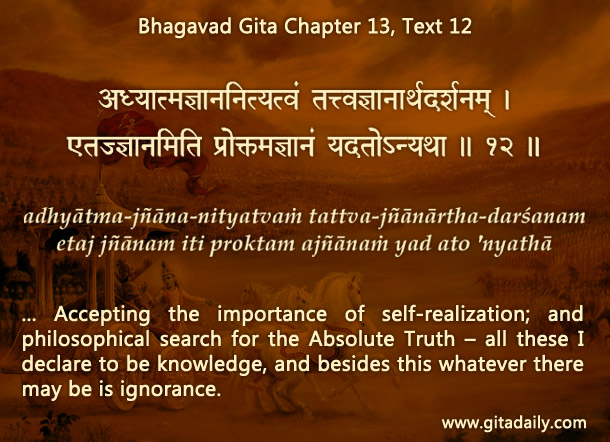We are all, by nature, active – we want the joy of doing worthwhile things. But not all activity is equally worthwhile. So we strive for not just activity but also productivity.
From the industrial age onwards, we have strived to maximize productivity by making various devices. Such devices may help us do things faster and better or may even do mechanical work for us.
As we now move deeper into the Internet age, connectivity has become a prime definer of progress. A place’s value is significantly shaped by its connectivity.
Activity, productivity and connectivity are all important. Yet infatuation with them can blind us to the necessity of life’s spiritual side.
The Bhagavad-gita (13.09) characterizes knowledge in terms of the perspicacity to perceive the universal and unavoidable problems of old age, disease, death and rebirth. We can’t solve these problems by material progress, no matter how dazzling; we need to raise our consciousness to the spiritual level and realize our indestructible essence.
Moreover, spiritual growth alone can provide us deep inner fulfillment. If we neglect such growth for pursuing worldly progress, we make ourselves prone to stress, depression and loneliness – maladies that afflict today’s spiritually-alienated mainstream society.
The same Gita section (13.08-12) that lists the characteristics of knowledge concludes the list by proclaiming (13.12) the primacy of spiritual knowledge and the necessity of seeking ultimate truths. While striving for spiritual growth, we don’t need to neglect or reject activity, productivity and connectivity – we just need to prevent them from monopolizing our conceptions of progress and success.
By yogic practices such as scriptural study and meditation, our consciousness expands beyond matter and connects with our spiritual core and the supreme spiritual reality, Krishna. Thus, we find inner fulfillment and attain an elevated spiritual consciousness that initially tolerates and eventually transcends worldly miseries.
To know more about this verse, please click on the image
Explanation of article:
Podcast:


Leave A Comment